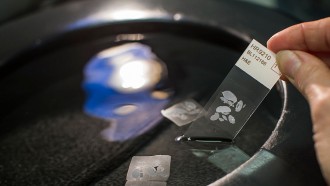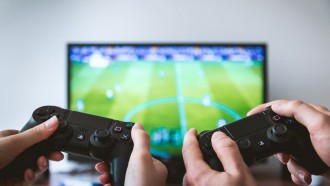Apple's iPhone 14 is more repairable than its predecessors, but who is only authorized to fix it?
The firm seems to have introduced an extra yet unneeded layer of friction when repairing a damaged iPhone 14 screen. Even in 2019, original Apple displays remain a common culprit in faulty repaired iPhones.
It may be simpler to destroy an iPhone 14 than it is to get it working properly again, according to Engadget's anonymous sources inside the third-party repair community.
Issue on AOD
The information from the source suggests that the new problem is related to the Always-On Display (AOD) of the iPhone 14. This function employs the device's two Ambient Light Sensors (ALS) to adjust the screen's brightness. At night or while the phone is in your pocket, this feature will turn off your screen automatically to save power.
If your display fails and you do not visit an Apple-authorized repair facility to replace it, the ALS will be disabled. Eventually, it will leave the screen permanently black unless you can recall the slider setting and manually change the phone's brightness.
For the record, the location of the ALS controller has always been an issue with prior iPhone models.
Read Also: Apple Confirms SIM Bug on iPhone 14 Models-Hardware Problem Maybe?
Visual Representation
In this YouTube video uploaded by Hugh Jefferys, featured by Engadget, he swapped the logic boards of two brand new iPhones to demonstrate the issue - both for the 14 and 14 Pro.
The phones started beeping and displaying error warnings despite having brand-new, Apple-made parts. The front-facing cameras, Battery Health, True Tone, and Auto Brightness are all turned off, as is FaceID. After switching them back, Jeffreys found that the issues remained; it was not until he scaled back to iOS 16.0 that the phones began to function normally again.
The "Parts Pairing" Policy
Apple's "Parts Pairing" policy, which requires users to utilize only approved replacement parts for their phones, is to blame for this malfunction, Engadget reported.
An iPhone's display, a frequently failing component, will be assigned a unique identifier that will be checked every time the device starts up. Having the phone's "own" display is necessary for it to function, and if it is not recognized, the phone will do nothing.
Users will be bombarded with error messages that direct them to contact Apple's local support center. The alerts will ultimately cease, but your device will be flagged as having malware or other malicious software installed on it.
This can only be avoided if the pairing is first approved by an Apple-certified technician using a proprietary software tool. According to the source, this procedure is "under lock and key" and needs a technician to access Apple's secret network through the internet.
The error was bypassed by independent repair shops using special EEPROM programmers until the release of the iPhone 13. These gadgets would scan the paired display for its unique component ID number, then permanently store it in the replacement screen, which was typically a refurbished original from Apple. While successful on older iPhone models, this does not fix the issues with the iPhone 14, unfortunately.
Related Article: iPhone confirmed to Get a USB-C: Apple Marketing Lead Says Company Didn't have a Choice
This article is owned by Tech Times
Written by Trisha Kae Andrada





